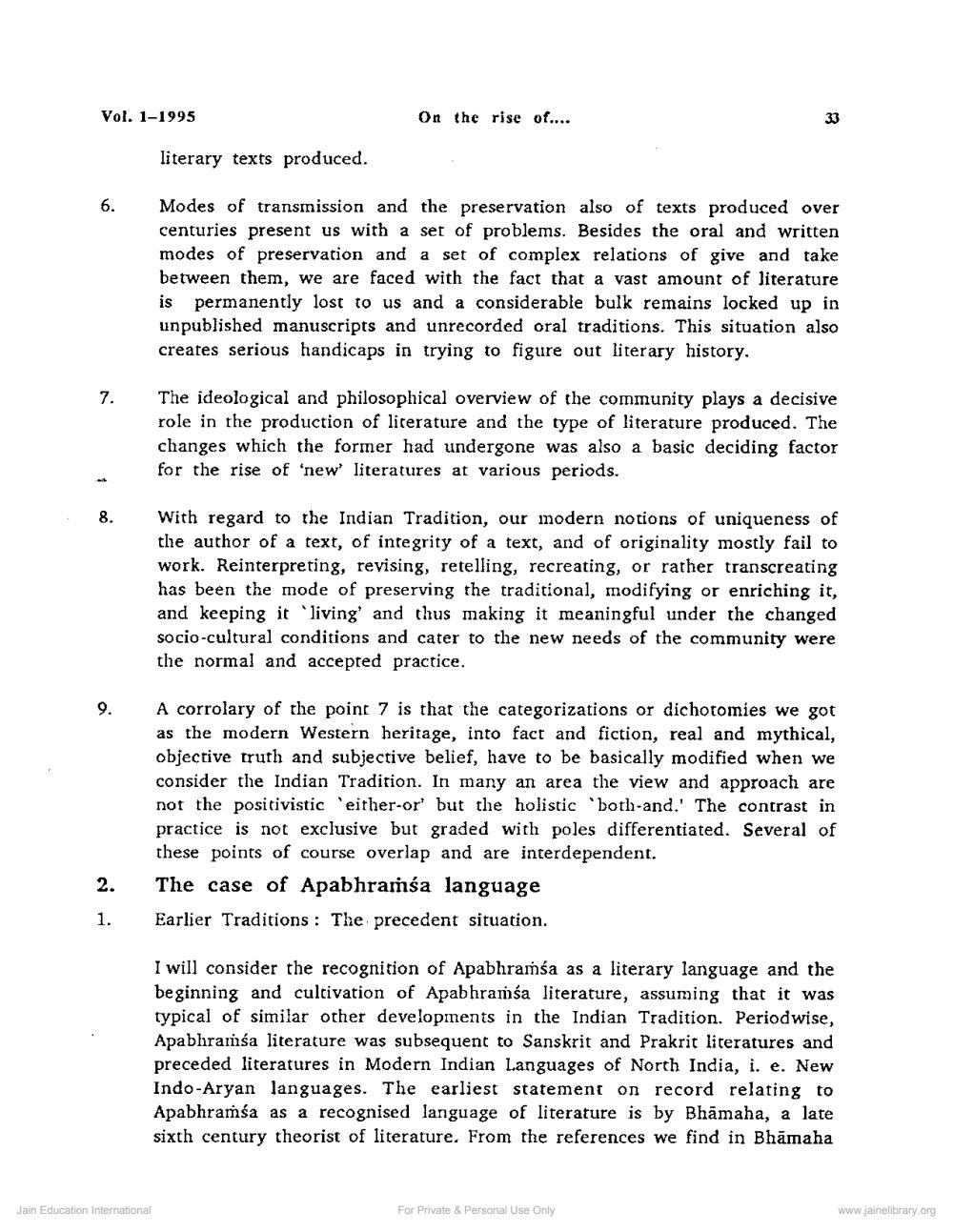________________
Vol. 1-1995
On the rise of....
literary texts produced.
Modes of transmission and the preservation also of texts produced over centuries present us with a set of problems. Besides the oral and written modes of preservation and a set of complex relations of give and take between them, we are faced with the fact that a vast amount of literature is permanently lost to us and a considerable bulk remains locked up in unpublished manuscripts and unrecorded oral traditions. This situation also creates serious handicaps in trying to figure out literary history.
The ideological and philosophical overview of the community plays a decisive role in the production of literature and the type of literature produced. The changes which the former had undergone was also a basic deciding factor for the rise of 'new' literatures at various periods.
With regard to the Indian Tradition, our modern notions of uniqueness of the author of a text, of integrity of a text, and of originality mostly fail to work. Reinterpreting, revising, retelling, recreating, or rather transcreating has been the mode of preserving the traditional, modifying or enriching it, and keeping it 'living and thus making it meaningful under the changed socio-cultural conditions and cater to the new needs of the community were the normal and accepted practice.
A corrolary of the point 7 is that the categorizations or dichotomies we got as the modern Western heritage, into fact and fiction, real and mythical, objective truth and subjective belief, have to be basically modified when we consider the Indian Tradition. In many an area the view and approach are not the positivistic 'either-or' but the holistic 'both-and.' The contrast in practice is not exclusive but graded with poles differentiated. Several of these points of course overlap and are interdependent. The case of Apabhramśa language Earlier Traditions : The precedent situation.
I will consider the recognition of Apabhramśa as a literary language and the beginning and cultivation of Apabhramsa literature, assuming that it was typical of similar other developments in the Indian Tradition. Periodwise, Apabhramnsa literature was subsequent to Sanskrit and Prakrit literatures and preceded literatures in Modern Indian Languages of North India, i. e. New Indo-Aryan languages. The earliest statement on record relating to Apabhramśa as a recognised language of literature is by Bhāmaha, a late sixth century theorist of literature. From the references we find in Bhāmaha
Jain Education International
For Private & Personal Use Only
www.jainelibrary.org




